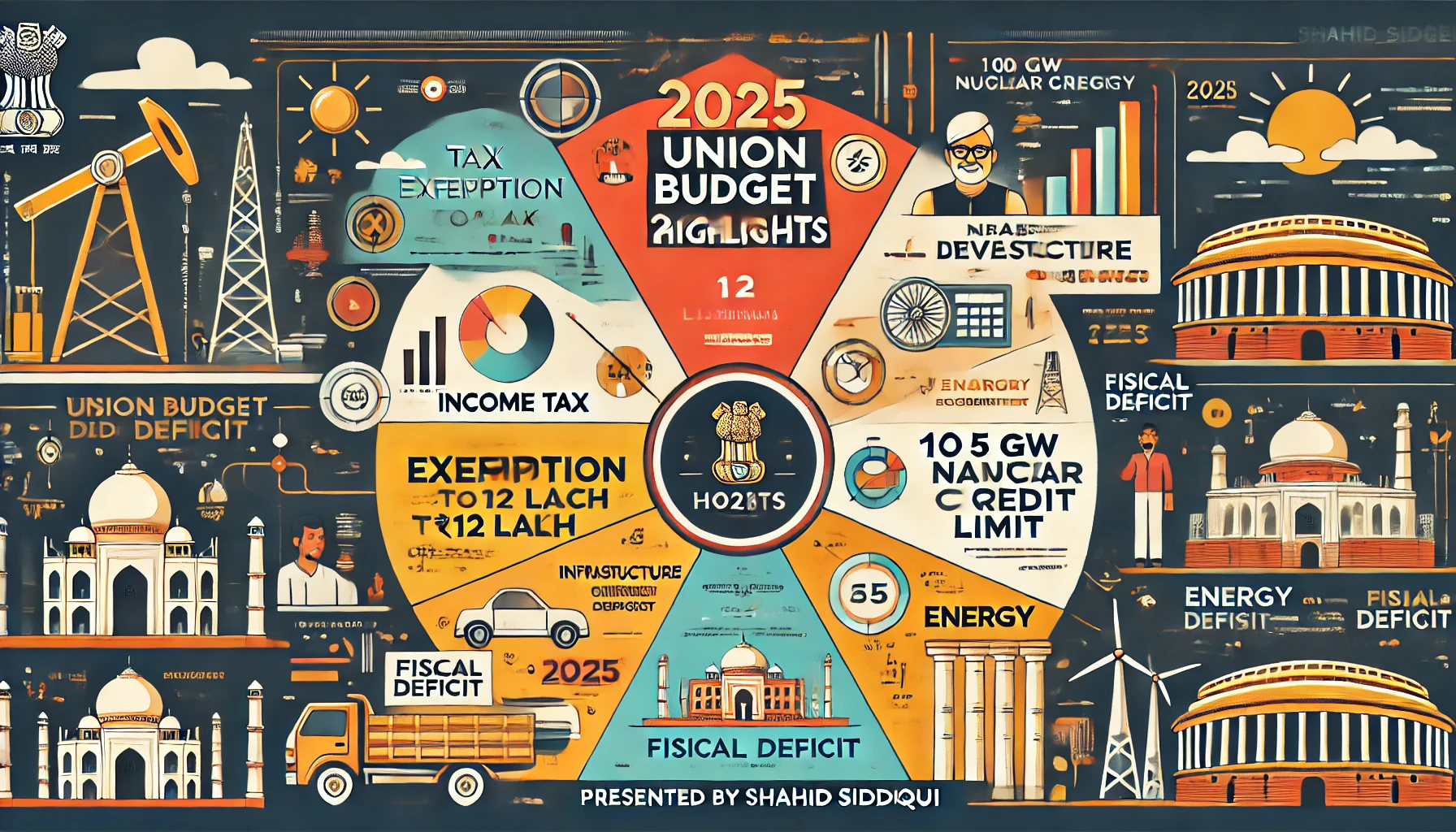Budget 2025-26: A Game Changer for the Middle Class and Economy
Finance Minister Nirmala Sitharaman presented the Union Budget for the fiscal year 2025-26, introducing a series of measures aimed at stimulating economic growth, providing tax relief to the middle class, and bolstering various sectors. Here’s a comprehensive overview of the key highlights:
Income Tax Reforms:
- Increased Tax Exemption Limit: The income tax exemption threshold has been raised from ₹7 lakh to ₹12 lakh per annum, effectively exempting individuals earning up to ₹1 lakh per month from income tax.
- Revised Tax Slabs: The new income tax structure is as follows:
- Income up to ₹4 lakh: Nil
- ₹4 lakh to ₹8 lakh: 5%
- ₹8 lakh to ₹12 lakh: 10%
- ₹12 lakh to ₹16 lakh: 15%
- ₹16 lakh to ₹20 lakh: 20%
- ₹20 lakh to ₹24 lakh: 25%
- Above ₹24 lakh: 30%
Additionally, a standard deduction of ₹75,000 is available for salaried individuals, effectively making income up to ₹12.75 lakh tax-free.
Agriculture and Rural Development:
- Prime Minister Dhan-Dhaanya Krishi Yojana: This initiative aims to assist 1.7 crore farmers across 100 districts with low productivity, focusing on enhancing agricultural output and providing better access to credit.
- Mission for Aatmanirbharta in Pulses: A six-year program has been launched to increase domestic production of pulses like Tur, Urad, and Masoor, aiming to reduce dependence on imports. Central agencies such as NAFED and NCCF will procure these pulses from farmers over the next four years.
- Enhanced Kisan Credit Card (KCC) Limit: The loan limit under the KCC has been increased from ₹3 lakh to ₹5 lakh to facilitate greater credit flow to farmers.
Support for Micro, Small, and Medium Enterprises (MSMEs):
- Credit Guarantee Scheme: The government has revamped the credit guarantee scheme for MSMEs, enhancing the credit guarantee cover and reducing the cost of credit.
- National Manufacturing Mission: A comprehensive mission covering small, medium, and large industries has been announced to further the “Make in India” initiative, aiming to boost domestic manufacturing and job creation.
Infrastructure and Investment:
- Capital Expenditure: The government has allocated ₹11.21 lakh crore for capital spending in 2025-26, representing 3.1% of GDP, to continue developing infrastructure projects.
- Urban Challenge Fund: An allocation of ₹1 lakh crore has been made to develop cities as growth hubs, focusing on sustainable urbanization and smart city initiatives.
Energy and Environment:
- Nuclear Energy Mission: A mission with an outlay of ₹20,000 crore has been announced for the research and development of small modular reactors, aiming to diversify India’s energy mix and reduce carbon emissions.
Fiscal Management:
- Fiscal Deficit Target: The government aims to reduce the fiscal deficit to 4.4% of GDP in 2025-26, down from a revised 4.8% in the current year, indicating a commitment to fiscal prudence.
These measures reflect the government’s focus on stimulating economic growth, supporting various sectors, and providing relief to the middle class.
